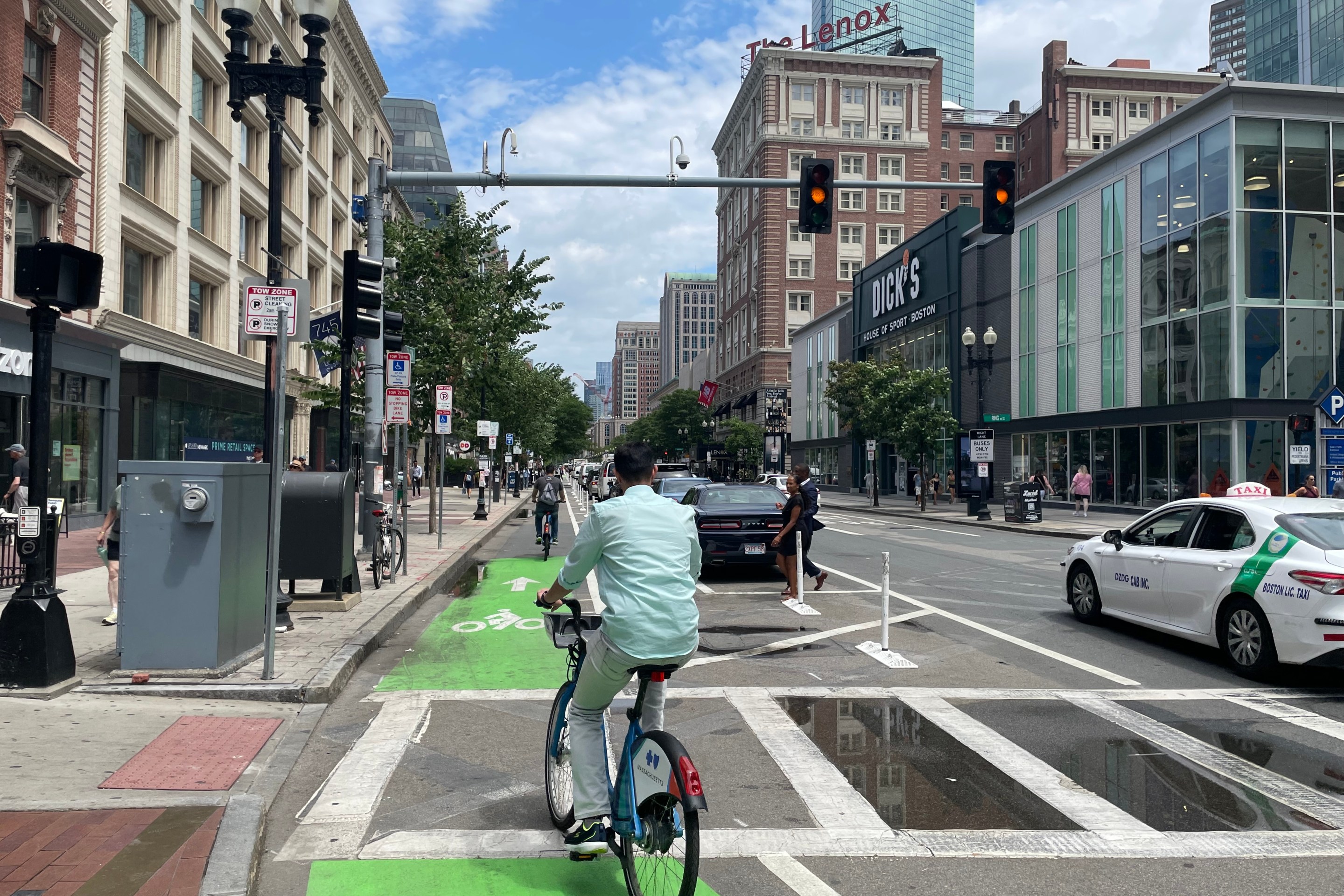MassDOT has converted four-lane sections of Reading's Main Street to a calmer, safer three-lane layout under a "pilot" project that will be evaluated for safety benefits over the summer and fall.
Main Street, also known as Route 28, connects suburban residential neighborhoods on the north side of town to Reading's walkable downtown district. Continuing south past the Haverhill Line's tracks, the street enters a district of highway-oriented strip malls before meeting a huge cloverleaf interchange at Route 128 on the town's southern border.
According to state crash records, drivers have injured at least 64 victims along the corridor since the beginning of 2017, and caused more than 500 non-injury-causing crashes during the same period.
The street's unusually high rate of crashes prompted MassDOT to propose the road diet as part of a repaving project that began earlier this year.
Parts of Main Street will retain the four-lane layout – including the locally-controlled section through downtown, and the section closest to the 128 interchange – but much of the rest will be re-striped to provide only one lane in each direction, plus turn lanes and 5-foot shoulders.
While traffic during the pilot period is expected to be lighter than usual thanks to the COVID-19 pandemic, Kristen Pennucci, MassDOT Director of Communications, says that MassDOT is most concerned with evaluating the project according to how much it reduces crashes and illegal speeding.
"Our aim is to increase safety for people traveling on Main Street and calm vehicle traffic with this project," wrote Pennucci in an email message. "To evaluate whether the project meets (our) safety goals, we are analyzing the impact of the road diet pilot on vehicle speeds along the roadway. We will compare maximum and average vehicle speeds at various locations along the project area measured before the road diet pilot with those measured during the road diet pilot to evaluate the safety impacts of the road diet configuration."
The Reading project isn't just a prominent safety project: it's also providing the state with a testing ground for new online public engagement efforts during the pandemic.
In lieu of holding a traditional evening public meeting for the project, MassDOT hosted an online meeting and posted the presentation on YouTube. While a typical project meeting might attract a few dozen concerned citizens, the online presentation has been viewed over 800 times so far:
"That video has received far more views than we anticipated," wrote Pennucci, who also added that "in addition to the presentation, MassDOT created an interactive online map and survey to gather public input during the pilot."
Pennucci characterized the public's response to this and other online meetings as "extremely positive," and said that the agency would continue to provide information and seek feedback online while the pandemic limits in-person engagement.






